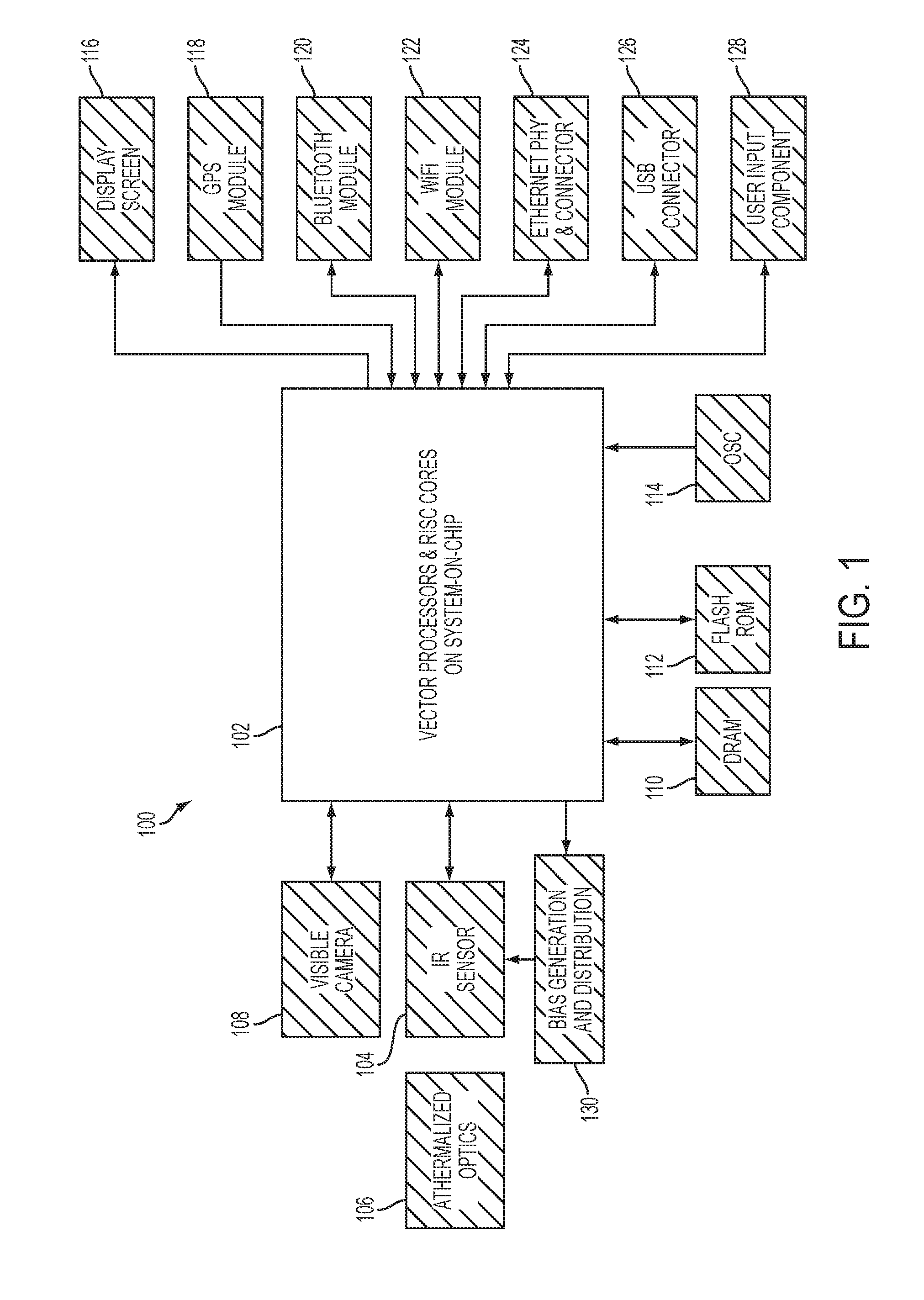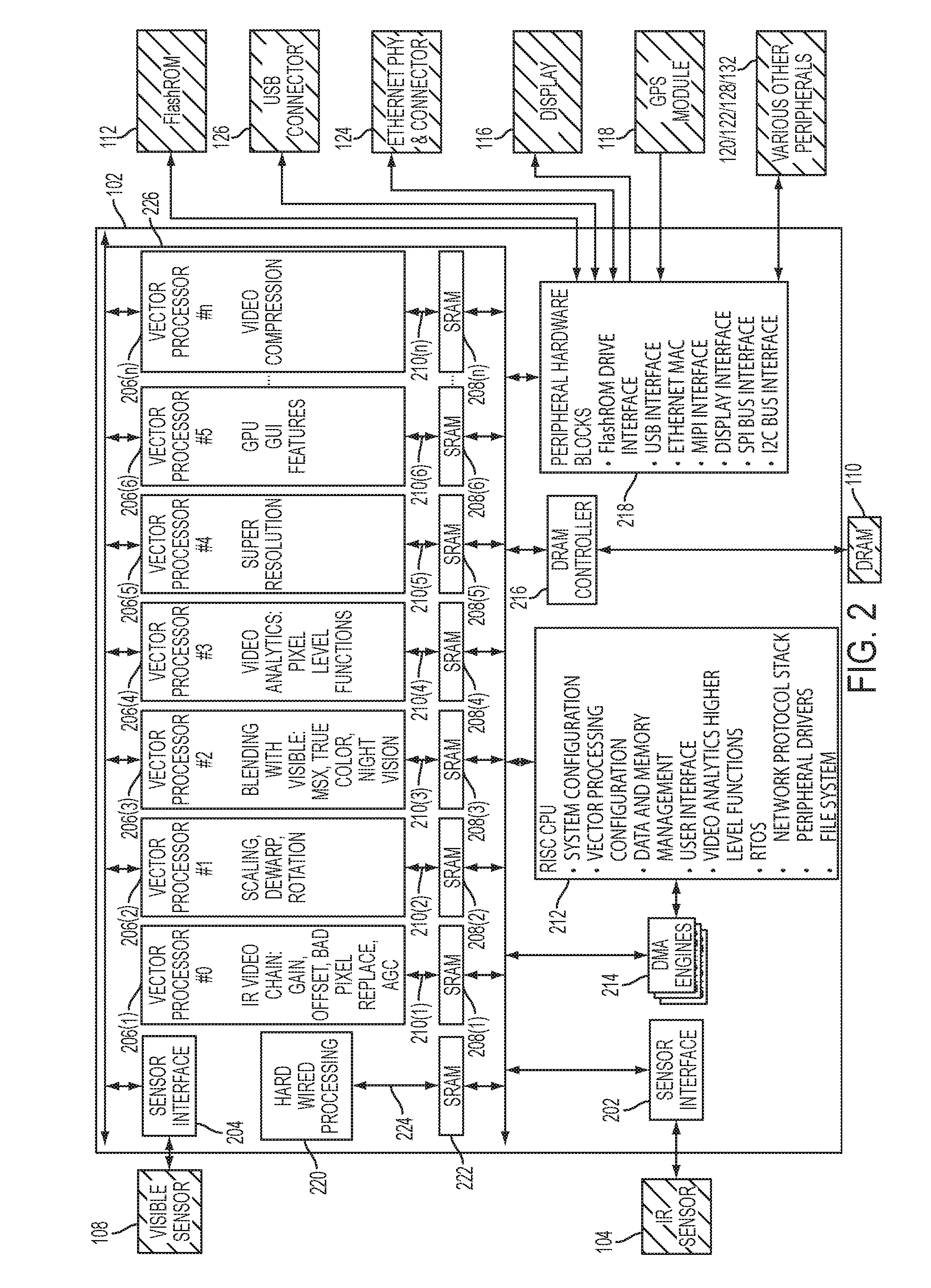Vector processing architectures for infrared camera electronics
a technology of infrared camera and processing architecture, applied in the field of infrared camera electronic architecture, can solve the problems of unfavorable infrared imaging system size, power requirements, unfavorable cost, size and/or power requirements, and require significant processing speed of pixels, so as to efficiently exploit pixel-level parallelism, improve electronics architecture, and improve the effect of processing captured infrared image data
- Summary
- Abstract
- Description
- Claims
- Application Information
AI Technical Summary
Benefits of technology
Problems solved by technology
Method used
Image
Examples
Embodiment Construction
[0018]A video (or image) processing chain (e.g., one or more operations to process raw video / image data captured by an imaging sensor to produce a usable output video / image) for digital imaging devices such as infrared cameras may by nature have a high potential for data-level parallelism which is unexploited in conventional digital imaging devices. For example, many operations of a typical infrared camera video processing chain involve repetitions of a same independent pixel-level operation for every pixel in a video image frame. In addition to basic video processing chains, other more complex video processing and video analytics algorithms may also in part involve a pixel-level operation that is repeated independently for every pixel in a video image frame. Such repeating operations for multiple data elements (e.g., multiple pixels) can potentially be carried out in parallel.
[0019]Techniques are disclosed herein to provide efficient, scalable, flexible, yet cost-effective infrared...
PUM
 Login to View More
Login to View More Abstract
Description
Claims
Application Information
 Login to View More
Login to View More - R&D
- Intellectual Property
- Life Sciences
- Materials
- Tech Scout
- Unparalleled Data Quality
- Higher Quality Content
- 60% Fewer Hallucinations
Browse by: Latest US Patents, China's latest patents, Technical Efficacy Thesaurus, Application Domain, Technology Topic, Popular Technical Reports.
© 2025 PatSnap. All rights reserved.Legal|Privacy policy|Modern Slavery Act Transparency Statement|Sitemap|About US| Contact US: help@patsnap.com



